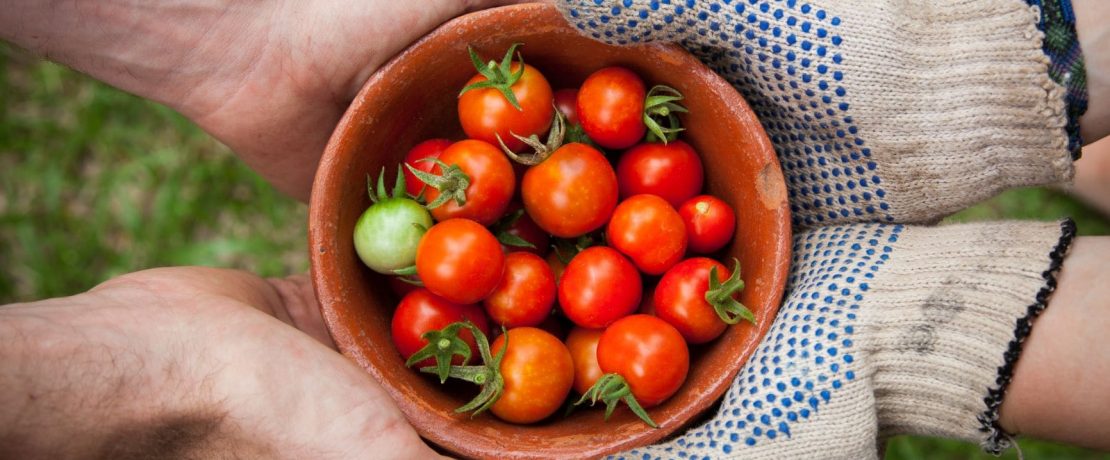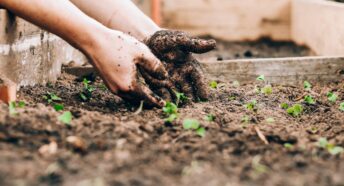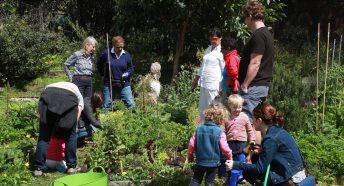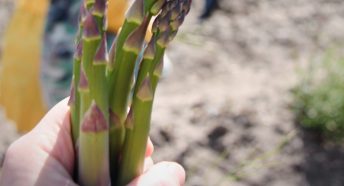How allotments are feeding community spirit
Caz Graham discovers how allotments are helping build communities and connect a range of people with the land, as well as their fellow allotment holders.
It was around ten years ago that England’s allotment holders noticed something a little strange. While they’d been quietly tending their veg, heads down, minding their own business, allotments had suddenly become the height of fashion. A new generation of avid growers couldn’t wait to get the soil under their nails.
And although allotment mania has calmed a little, in some places you’ll still sit on a waiting list for as long as five years before you can start leafing through the seed catalogues.
Rooting for change
In Stoke-on-Trent, the Root ‘n’ Fruit project is demonstrating what a key role allotments can play in their local communities – and not just for those who want to put fruit and veg on their own tables. A spark of an idea, a lot of hard work and support from several different pockets of funding, including a couple of Stoke potteries, led to the founding of Root ‘n’ Fruit, a community food initiative working with food banks and other local groups.
‘The original ethos behind it was to grow food to give away to needy people, because there are a lot of people in Stoke-on-Trent in food poverty,’ says Root ‘n’ Fruit steering group member Bob Bennett.
Volunteers, nearby schools and groups, including the Prince’s Trust Fairbridge programme for 13 to 15-year-olds, all grow food on Root ‘n’ Fruit’s 600 square metre allotment in Middleport, which is then donated to local people who need it. The group is currently building an outdoor kitchen and hosting a community arts initiative to raise its profile and get more people involved.
And the artwork is just as ambitious as the growing plans – if you fancy taking a look at T.E. Lawrence’s Seven Pillars of Wisdom interpreted through the medium of willow, this is the place to see it.
‘You’re never going to feed the whole population through something like this,’ says Bob. ‘But I look at it as a community resource, and somewhere people can learn to grow their own food. It’s about making the connection between growing and eating.’
Finding and keeping volunteers is challenging, but for Bob the sheer pleasure of getting out in the open air and working a piece of land, as well as the health benefits that provides, provide ample incentive: ‘It’s great therapy – and you get tomatoes, as well,’ he smiles.
Allotments for all
There’s a growing body of evidence linking gardening with improved mental and physical health; yet allotments often aren’t practical for people with limited mobility or other disabilities. So when Newcastle City Council found itself with a disused carpark in the east of the city, they decided to turn it into a new allotment that was fully accessible to all.
Jim Watson, the secretary of the Fairways Allotments in Heaton, has had an allotment for more than 50 years. When he was younger, Jim grew leeks competitively, and even has a couple of trophies to show for it; but he’s now partially sighted and unable to manage a traditional allotment.
However, the 37 plots at Fairways have been constructed so that wheelchair users, people with mobility problems and those with visual disabilities like Jim can garden safely and comfortably. And the idea has gone down a storm: all the plots were snapped up immediately and two years on, they’re still full, proving that successful urban regeneration can mean creating green spaces as well as housing.
‘All the beds are raised – they’re built up to two foot high – and just three foot wide, so you can reach past the middle and they’re easy to work,’ Jim explains. There are also two shared polytunnels. Some of the plots are held by retired people, who can’t manage a conventional garden and who enjoy the social side of allotment life, while others are worked by people with learning or physical disabilities, sometimes with the help of their carers.
Jim believes getting out in the open air and enjoying the company of other gardeners is a real tonic and helping to grow a good crop of fruit and veg does wonders for the self-esteem. These allotments mean he can still enjoy his lifelong interest in horticulture and help others do the same, despite losing his sight.
Growing demand
In Newcastle, as in many other areas, allotments are highly sought after; the city’s current waiting list stands at 550 names. Fairways Allotments soaked up a little of that demand when they formally opened in April 2014. And that’s also when the first soil was being dug over on another long-awaited allotment, in Haynes, a village near Bedford.
Haynes may have had eight ‘ploughlands’ when it was mentioned in the Domesday Book in 1086, but in 2006 there was no such land in the neighbourhood for local people to grow their own produce. Villagers were so keen to change this that they established the Haynes Allotments and Leisure Gardeners Association (HALGA), despite the fact there were no allotments there.
‘My wife used to say that I was on the committee that was going nowhere, because it was six or seven years before we even had any land,’ says HALGA member Paul Miller. ‘But we stuck with it.’
And eventually, the waiting paid off. Central Bedfordshire Council owned some land next to the village that was let to a tenant farmer, but, when he decided to retire, the parish council negotiated a lease on one of his fields before a new tenant took over. Working together with HALGA, they planned out 20 new allotments with a new access track, water supply and fencing.
Paul, an agricultural engineer, had his doubts about how well the land would perform when they first got onto it: ‘I thought it was very heavy soil and we were going to struggle, but it’s come good very quickly,’ he says. ‘We had a couple of big loads of organic soil improver, and the ground’s come round remarkably well.’ So well, in fact, that what was a bare field a couple of years ago is now a community hub and a blueprint for how a village can reduce its food miles and achieve greater sustainability – which is why the project has previously been shortlisted in CPRE Bedfordshire’s Living Countryside Awards.
In September last year, HALGA held its first annual produce show, and the site is quickly developing that classic allotment look: a vibrant patchwork made up of great green swathes of growing veg, crisscrossed by strips of sunflowers, dahlias and beanpoles. It’s a new green shoot in a landscape where some older allotment sites are being eyed up by local authorities that need space for new housing and hard cash from developers to counter government cuts. But the appetite for digging our own patch of earth is as strong as ever.
This article, or a version of it, was originally published in CPRE’s award-winning magazine, Countryside Voices. You’ll have Countryside Voices sent to your door three times a year, as well as access to other benefits including discounts on attraction visits and countryside kit from major high street stores, when you join as a CPRE member. Join us now.









